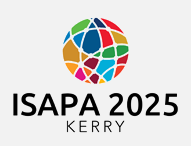Start Date
17-6-2025 9:00 AM
End Date
17-6-2025 10:30 AM
Abstract
Introduction Based on assumptions of neuroscience and educational accessibility, Universal Design for Learning (UDL) correlates different neural networks with multiple means for learning. Although this approach has been gaining prominence, there is still little evidence resulting from studies applied to the field of Physical Education (PE). This study aims to analyze whether a PE teaching program based on the principles of UDL can meet the needs of a diverse group of students.
Methodology A qualitative field research of “program evaluation study” type was conducted. The intervention lasted two months within two classes of second grade (24 sessions in each) in an Elementary School, located in the countryside of São Paulo-Brazil. The criterion for selecting the classes (20 students each) was having at least one student with a disability enrolled. The curricular content addressed was “Traditional games”, within a continuum of variations and alternatives for completion of the activities. The data collection was based on systematic observation recorded in a field diary.
Results The thematic analysis resulted in three main themes, corresponding to a continuum of variations in the multiple means of learning. Engagement: related to affective networks, involves the motivation to learn and the different ways of attributing meaning to learning; Representation: based on multimodal delivery of information and recognition through different perceptive channels; Action and expression: based on strategic networks, allows expressing ideas and executing actions considering different ways of communication, and diverse mental and motor patterns.
Conclusions Peer debriefing indicated that the planning and implementation of the teaching program based on UDL contemplated the demands and variability of learners, making PE accessible even to students with disabilities.
References Katz, J., & Sokal, L. (2016). Universal Design for Learning as a Bridge to Inclusion: A Qualitative Report of Student Voices. International Journal of Whole Schooling, 12(2), 36-63.
Munster, M. A. van, Lieberman, L. J., & Grenier, M. A. (2019). Universal Design for Learning and Differentiated Instruction in Physical Education. Adapted Physical Activity Quarterly, 36(3), 359-377. DOI: 10.1123/apaq.2018-0145
Taunton, S., Brian, A.,& True, L. (2017) Universally Designed Motor Skill Intervention for Children with and without Disabilities. Journal of Developmental and Physical Disabilities, 1(1), 2-15. DOI: http://dx.doi.org
Recommended Citation
van Munster, Mey and Basso-Braz, Aline, "Physical education teaching program according the universal design for learning principles: accessibility for students with disabilities" (2025). International Symposium of Adapted Physical Activity and International Symposium on Physical Activity and Visual Impairment and Deafblindness. 16.
https://sword.mtu.ie/isapa/2025/day2/16
Physical education teaching program according the universal design for learning principles: accessibility for students with disabilities
Introduction Based on assumptions of neuroscience and educational accessibility, Universal Design for Learning (UDL) correlates different neural networks with multiple means for learning. Although this approach has been gaining prominence, there is still little evidence resulting from studies applied to the field of Physical Education (PE). This study aims to analyze whether a PE teaching program based on the principles of UDL can meet the needs of a diverse group of students.
Methodology A qualitative field research of “program evaluation study” type was conducted. The intervention lasted two months within two classes of second grade (24 sessions in each) in an Elementary School, located in the countryside of São Paulo-Brazil. The criterion for selecting the classes (20 students each) was having at least one student with a disability enrolled. The curricular content addressed was “Traditional games”, within a continuum of variations and alternatives for completion of the activities. The data collection was based on systematic observation recorded in a field diary.
Results The thematic analysis resulted in three main themes, corresponding to a continuum of variations in the multiple means of learning. Engagement: related to affective networks, involves the motivation to learn and the different ways of attributing meaning to learning; Representation: based on multimodal delivery of information and recognition through different perceptive channels; Action and expression: based on strategic networks, allows expressing ideas and executing actions considering different ways of communication, and diverse mental and motor patterns.
Conclusions Peer debriefing indicated that the planning and implementation of the teaching program based on UDL contemplated the demands and variability of learners, making PE accessible even to students with disabilities.
References Katz, J., & Sokal, L. (2016). Universal Design for Learning as a Bridge to Inclusion: A Qualitative Report of Student Voices. International Journal of Whole Schooling, 12(2), 36-63.
Munster, M. A. van, Lieberman, L. J., & Grenier, M. A. (2019). Universal Design for Learning and Differentiated Instruction in Physical Education. Adapted Physical Activity Quarterly, 36(3), 359-377. DOI: 10.1123/apaq.2018-0145
Taunton, S., Brian, A.,& True, L. (2017) Universally Designed Motor Skill Intervention for Children with and without Disabilities. Journal of Developmental and Physical Disabilities, 1(1), 2-15. DOI: http://dx.doi.org

